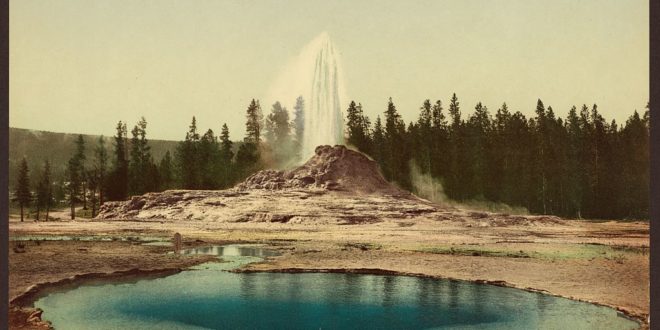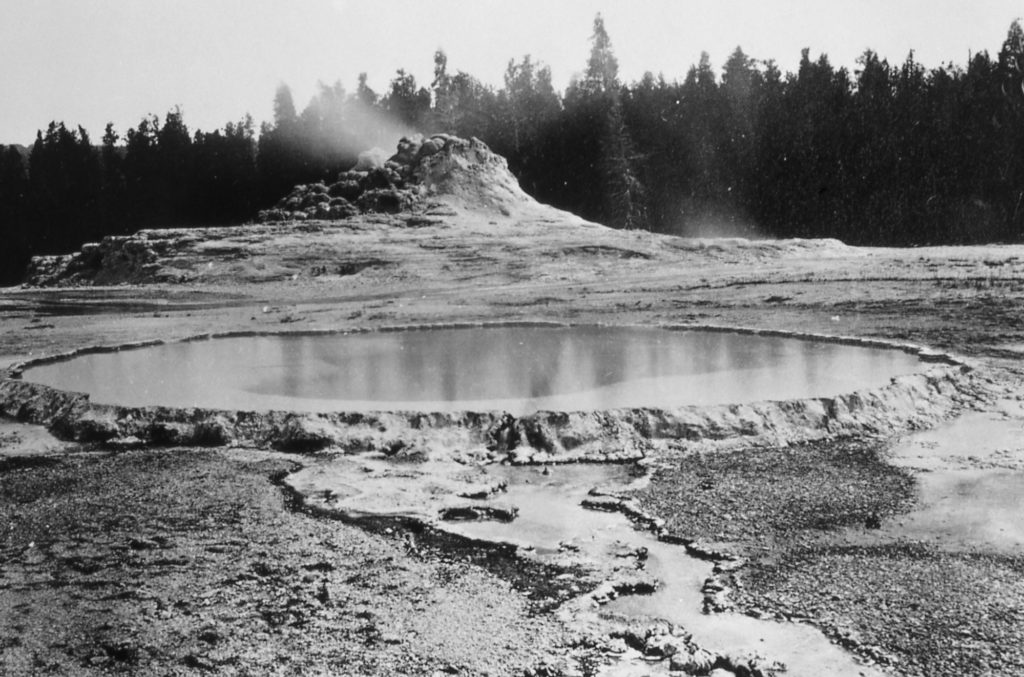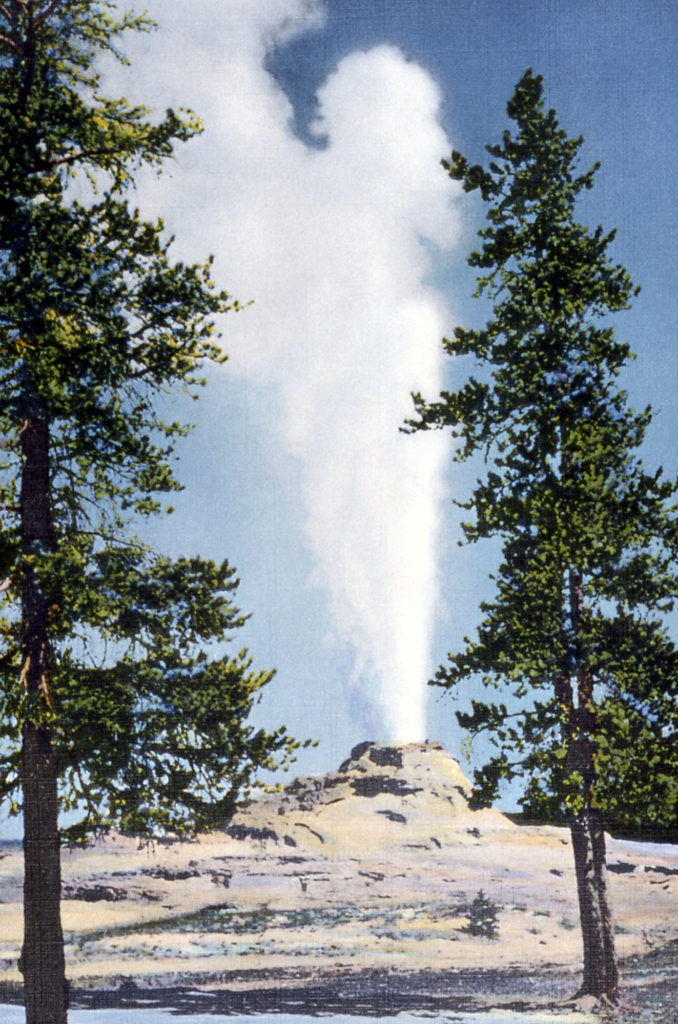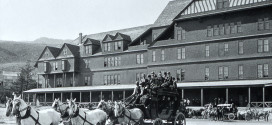Castle Geyser is, of course, one of the most famous features in Yellowstone National Park.
Not known for its prowess in “discharging water,” unlike Grand or Old Faithful Geysers, Castle is nonetheless a star attraction of the Upper Geyser Basin—for both its shape and the fortunate circumstances behind it.
Indeed, it takes many thousands of years for thermal waters to deposit enough sinter to built an edifice as grand as Castle Geyser. Such effort was not always appreciated, especially early in the Park’s history, when it was customary to take home a souvenir or two—usually a chunk of chipped-off geyserite. That Castle Geyser, being an aggregate of temptation, survived is no laughing matter.
The name “Castle” has been ascribed to members of the 1870 Washburn Expedition; one of the best explanations for the name comes from expedition co-leader Nathaniel Pitt Langford’s 1871 article in Scribner’s Monthly:
“The Castle,” situated on the summit of an incrusted mound, has a turreted crater through which a large volume of water is expelled at intervals of two or three hours to the height of fifty feet, from a discharging orifice about three feet in diameter. The architectural features of the silicious sinter surrounding it, which is very massive and compact, indicating that at some former period the flow of water must have been greater than at present, suggested its name. A vent near it is constantly discharging a large stream of boiling water and when the geyser is in action the water in this vent boils and bubbles with great fierceness.
Langford included a similar description in his diary of the expedition, published in 1905, but added information on the features adjacent to Castle Geyser:
One of the most wonderful of the springs in this basin is that of ultra-marine hue directly in front of the “Castle” geyser. It is nearly round, having diameters of about twenty and twenty-five feet, the sides being corrugated and funnel-shaped, and at the depth of thirty feet opening out into a cavern of unfathomable depth, the rim of the spring having beautifully escalloped edges. It does not boil over, but a very small stream of water flows from it, and it is not affected by its appearance by the spouting of the geyser in its immediate proximity. There is evidently no connection between this spring and the geyser.
Geologist Arthur Peale of the 1871 Hayden Geological Survey was also complimentary of Castle, calling it “the prettiest one of [the Upper Geyser Basin].” And Survey photographer William Henry Jackson took the photo shown above.
Captain John Whitney Barlow, in his Report of the Reconnaissance of the basin of the upper Yellowstone in 1871, was similarly lavish in his praise of Castle:
Its resemblance to a ruined castle or tower is wonderfully striking. In ascending this hill to the castle-crater the surface of the rock is found to be much broken, crumbling away and worn into channels by the water flowing form the geyser during its periods of action. The base of the castle-crater, on the east side, is 20 feet above the slope of the hill, and, on the west, it is even with it. it is 325 feet in circumference, and composed of partially disintegrates strata of calcareous rock.
The turret on the tower is 125 feet in circumference and rises 20 feet above the base. Broken and crumbling masses of rock at the top give a good idea of the battlement turret. The whole structure is graceful in its proportions and details, resembling and old castle somewhat dilapidated. Even the appearance of port-holes is given by small apertures at several points in the turret and base. This geyser has frequent periods of eruptions, throwing off a great quantity of steam. The discharge of water is not great, being but a small stream rising to the height of about 60 feet.
Indeed, while Castle isn’t famous (per se) for its eruptions, its shape more than compensates any eruptive deficiencies. To this day, it still rises along the horizon, serving as eminent landmark as visitors wind their way across the basin.
 Yellowstone Insider Your Complete Guide to America's First National Park
Yellowstone Insider Your Complete Guide to America's First National Park








You must be logged in to post a comment.